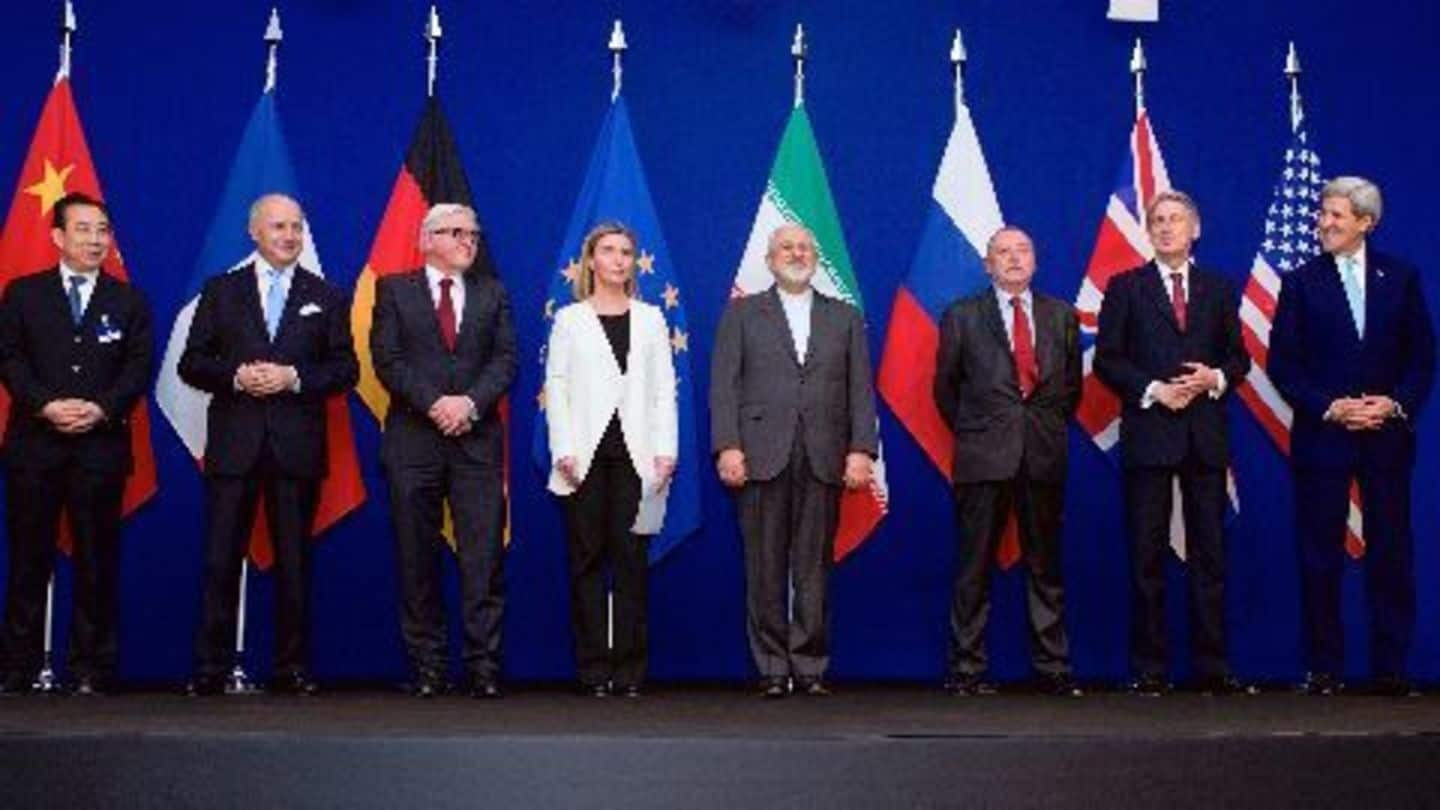
Nuclear deal: US lifts sanctions on Iran
What's the story
International sanctions on Iran against its covert nuclear weapons programme have been lifted, after it was confirmed that Iran has complied with key aspects of the nuclear deal with the P5+1 countries. In a press statement, US Secretary of State John Kerry confirmed that the sanctions have been lifted. Kerry stated that "Iran has fully implemented its required commitments" under the nuclear agreement.
Iran
Iran's nuclear programme
Mohamed Reza Shah initiated Iran's nuclear program during the 1950s. Currently, Iran has a robust nuclear infrastructure, including uranium mining, milling, conversion, and enrichment capabilities. Iran has 2 operational uranium mines, an unknown number of research facilities, a research reactor and three known uranium enrichment plants. Its research facility in Fordo is built inside a mountain to withstand any sort of attack including air-strikes
Why
Why were the sanctions imposed?
The biggest fear out of Iran's nuclear programme was that Tehran's acquisition of nuclear weapons could lead to a nuclear arms race in West Asia involving Saudi Arabia, Egypt and Turkey. This could lead to a broader escalation of the prevailing Shia-Sunni conflict in the region. In a bid to prevent this, sanctions aim to slow down Iran's path to a nuclear weapon.
2008
What were the imposed sanctions?
The EU imposed restrictions on trade with Iran and banned EU insurers from insuring Iranian products including oil and gas, severely crippling Iranian energy production. The US imposed an arms embargo and froze overseas assets of Iran worth over $100 billion. Under UN sanctions, several Iranian central banks were also blacklisted, making it difficult for Iran to process payments for oil and gas trade.
Break-out Capacity
Conditions: Iran's break-out capacity
The method used to slow down Iran's nuclear programme involves restricting its break-out capacity. Break-out capacity is the time taken to produce enough fissile material for one nuclear bomb. The conditions of the nuclear deal, primarily revolve around this factor. The longer it takes Iran to build a nuclear weapon, the longer other countries can be persuaded to abstain from a nuclear arms race.
Personal
What is fissile material?
Fissile material is radioactive material that has been enriched to be able to sustain a nuckear fission reaction. This material can be used to produce energy as well as make a nuclear bomb.
Uranium Enrichment
Conditions: Reducing uranium enrichment
The first line of defence against Iran's break-out capacity is reducing its uranium enrichment capabilities. To this effect, the number of Iran's enrichment centrifuges will be reduced from 20,000 to 5060 and only the older models will be allowed to operate. Only the facility at Natanz will be allowed to operate, while the facility at Fordo will be converted into a physics research laboratory.
Uranium Stockpile
Conditions: Reducing Iran's enriched uranium stockpile
Iran's stockpile of low enriched uranium is to be reduced from 10,000 kg to 300kg. To do so, the excess uranium will be shipped to Russia and other countries for re-processing. Iran will not be allowed to enrich any more uranium for the next fifteen years. Also the core of the heavy-water reactor in Arak will be redesigned so that it cannot produce plutonium.
IAEA Inspections
Conditions: Strict monitoring by the IAEA
All three of Iran's nuclear facilities at Natanz, Fordo and Arak, will be strictly monitored by the International Atomic Energy Agency. The IAEA will install devices, including an an Online Enrichment Monitor at all these facilities for real-time monitoring of Iran's uranium enrichment activities at these facilities. These devices also include cameras, Geiger counters to measure radiation and sensors to detect heat signatures.
Information
What does Iran gain?
The sanctions have cost Iran over $160 billion in annual oil revenues since 2012. The lifting of sanctions will enable Iran to resume full-scale oil trade and benefit countries like India who were unable to procure Iranian crude under the sanctions.